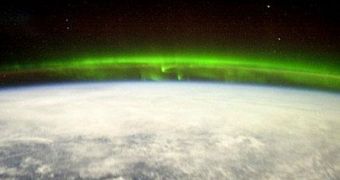Experts at the NASA Wallops Flight Facility in Virginia will soon launch a series of four rockets into Earth's ionosphere, a layer of the atmosphere that contains mysterious electric currents. Some of the these little-understood currents interfere with electrical signals coming from satellites.
The exact nature and source of these interactions has yet to be determined, investigators say, which is why the new mission is being carried out. Atmospheric scientists suspect that the interferences are coming from the ionosphere.
This is a layer of the atmosphere that contains portions of the mesosphere, thermosphere and exosphere. It is located at the outer edge of the planetary atmosphere, and its main feature is the fact that it's ionized by solar radiation.
It plays a tremendously important role in supporting Earth's magnetosphere, the layer that defends the planet against radiation and energetic particles produced by solar flares and coronal mass ejections.
However, due to its electrical properties, it has the tendency to disrupt signals sent by communications and GPS satellites in Earth's orbit. The new rockets NASA plans to launch will soar to altitudes of about 100 miles (160 kilometers), in an attempt to understand why this happens.
At this point, scientists have a basic understanding of what's going on. Solar radiation, especially in the form of extreme ultraviolet light, hits air molecules, and creates electrically charged particles such as protons and atomic oxygen.
The research plans to study how these particles interact with neutral particles in the same layer of the atmosphere, to give rise to our planet's famous dynamo currents. In the lower levels of the ionosphere, recent studies have identified currents of plasma particles.
These currents are influenced by solar and magnetic activities, and they change every day. They have the tendency to loop from the planetary equator all the way to the poles, and experts want to understand them in more detail.
“A better understanding of our own ionosphere will help us understand planets elsewhere in the Universe – any planet with an atmosphere is sure to have these currents,” explains expert Rob Pfaff, quoted by Daily Galaxy.
“This experiment has never been done before. We've measured the dynamo currents using rocket probes, but we've never simultaneously measured the currents along with the upper atmosphere winds and the electric fields that drive the currents,” he adds.
Pfaff is a NASA sounding rocket program scientist at the NASA Goddard Space Flight Center (GSFC), in Greenbelt, Maryland.

 14 DAY TRIAL //
14 DAY TRIAL //